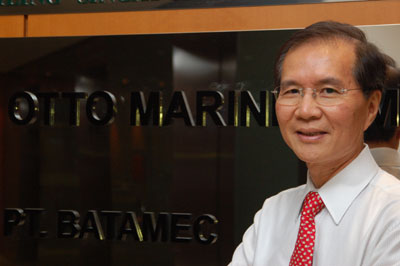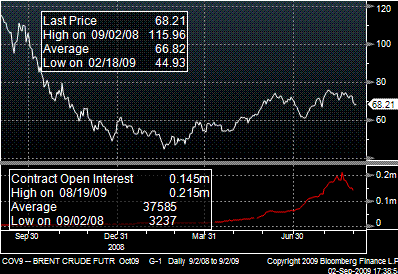
Apart from Keppel FELS and SembMarine, Otto is also able to design the entire offshore carrier, says CEO Lee Kok Wah. Photo by Sim Kih
CAPITAL EXPENDITURE by oil companies declined this year, but brokers are expecting it to come back with the recovery of oil prices, said Otto Marine CEO, Mr Lee Kok Wah, during an analyst update this week.
From less than US$40 per barrel in Sep last year, oil prices have recovered to above US$60.
Demand for offshore vessels is much more stable than demand for vessels that transport trade cargo, said Mr Lee, who was formerly from one of the world’s leading container shippers.
Demand for container vessels depends on the vagaries of demand for consumer goods while demand for bulk carriers depends on commodities movement.
Demand for offshore support vessels, however, will be stable as long as oil prices remain above US$40 per barrel to make oil and gas exploration activities viable.
Very often, an offshore support vessel once deployed, is unlikely to be replaced by a competing vessel especially if she is customized.
For this reason, an offshore support vessel, once deployed, could be in service at the same location for many years.

Demand for offshore vessels is dependent on oil prices sustaining above US$40 a barrel.
Otto Marine specializes in building complex offshore support vessels and was listed as the world’s fifth largest AHTS builder in 2008. (Dubai Dry-docks is the largest after consolidation with a few shipyards).
Otto Marine also has a ship chartering business.
1H09 ship-chartering revenues of S$8.4 million were mostly from tugs and barges, but this will be boosted when charter income from offshore support vessels kick in 2H09,” says Mr Lee.
”The impact will be big,” he said.
He expects FY09 ship chartering to contribute about 20% to the group bottom line, compared to less than 5% in 1H09.
Chartering and leasing contracts for Otto’s 12 wholly-owned vessels as at 27 Aug 2009 were as high as US$78,000 per day.
These include three pairs of tugs-and-barges, two 61-meter maintenance vessels, and four anchor handling tug supply vessels.
As the offshore support vessels are bareboat charters, net margins can be as high as 60%-70%, after the deduction of loan interest and depreciation.
The company is expected to have a fleet size of 19 vessels by the end of this year. Nine of these will be offshore support vessels.
To fund its fleet expansion, it is raising S$118.7 million through a rights issue of 2 new shares for 5 existing shares held at 25 cents per share.
S$57.5 million has been planned for fleet expansion, S$39.5 million for paying off loans, while S$18.5 million will be for general working purposes.
Immediately after the rights issue, the company’s net gearing is expected to reduce from the current level of 1.16x to 0.43x.
Its chairman, Yaw Chee Siew, will sub-underwrite 85% of the rights Issue. The chairman owns 72% of Otto Marine.
The management expects a further increase in chartering income as more offshore support vessels are chartered.







